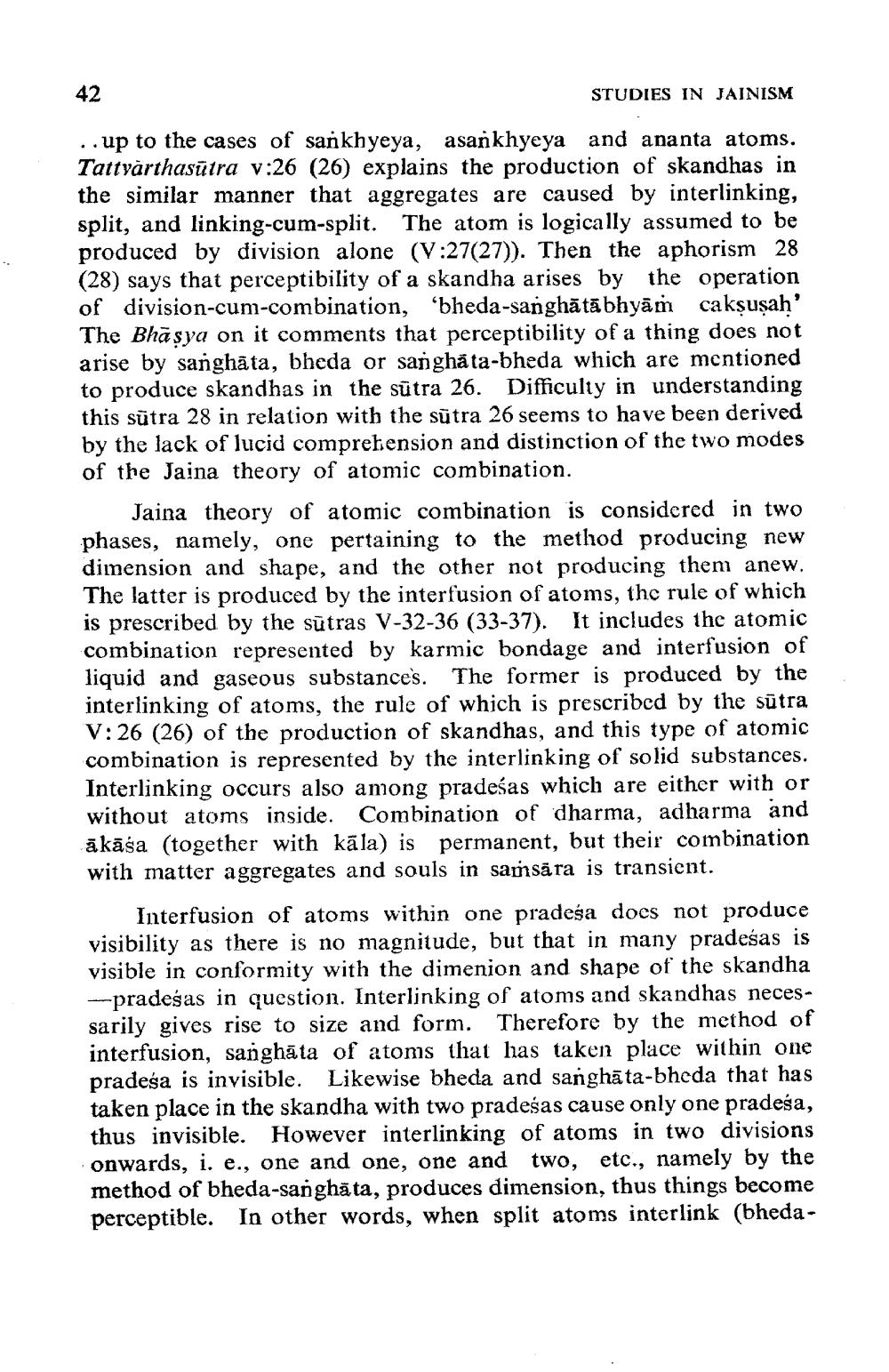________________
STUDIES IN JAINISM
.. up to the cases of sankhyeya, asankhyeya and ananta atoms. Tattvårthasūtra v:26 (26) explains the production of skandhas in the similar manner that aggregates are caused by interlinking, split, and linking-cum-split. The atom is logically assumed to be produced by division alone (V:27(27)). Then the aphorism 28 (28) says that perceptibility of a skandha arises by the operation of division-cum-combination, 'bheda-sanghātā bhyām caksusah' The Bhāsya on it comments that perceptibility of a thing does not arise by sanghāta, bheda or sanghăta-bheda which are mentioned to produce skandhas in the sūtra 26. Difficulty in understanding this sūtra 28 in relation with the sūtra 26 seems to have been derived by the lack of lucid comprehension and distinction of the two modes of the Jaina theory of atomic combination.
Jaina theory of atomic combination is considered in two phases, namely, one pertaining to the method producing new dimension and shape, and the other not producing them anew. The latter is produced by the interfusion of atoms, the rule of which is prescribed by the sūtras V-32-36 (33-37). It includes the atomic combination represented by karmic bondage and interfusion of liquid and gaseous substances. The former is produced by the interlinking of atoms, the rule of which is prescribed by the sūtra V:26 (26) of the production of skandhas, and this type of a combination is represented by the interlinking of solid substances. Interlinking occurs also among pradeśas which are either with or without atoms inside. Combination of dharma, adharma and ākāśa (together with kāla) is permanent, but their combination with matter aggregates and souls in saṁsāra is transient.
Interfusion of atoms within one pradeśa does not produce visibility as there is no magnitude, but that in many pradeśas is visible in conformity with the dimenion and shape of the skandha --pradeśas in question. Interlinking of atoms and skandhas necessarily gives rise to size and form. Therefore by the method of interfusion, sanghāta of atoms that has taken place within one pradeśa is invisible. Likewise bheda and sanghāta-bheda that has taken place in the skandha with two pradeśas cause only one pradeśa, thus invisible. However interlinking of atoms in two divisions onwards, i. e., one and one, one and two, etc., namely by the method of bheda-sanghāta, produces dimension, thus things become perceptible. In other words, when split atoms interlink (bheda




